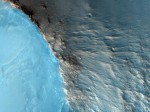A NASA spacecraft built to study the atmosphere of Mars like never before will arrive at the Red Planet tonight (Sept. 21) and you canwatchit live online.
After 10 months in deep-space, NASA's Mars Atmosphere and Volatile EvolutioN (MAVEN) spacecraft is expected toenter orbit around Marsand begin a one-year mission studying the planet's upper atmosphere. The Mars arrival will cap a 442 million-mile (711 million kilometers) trek across the solar system.
You canwatch the MAVEN spacecraft arrive at Marson Space.com, courtesy of NASA TV, in a live webcast that runs from 9:30 p.m. to 10:45 p.m. EDT (0130 to 0245 GMT). If all goes well, MAVEN will enter orbit around Mars at 9:50 p.m. EDT (0250 GMT), according to NASA officials.
"So far, so good with the performance of the spacecraft and payloads on the cruise to Mars," David Mitchell, NASA's MAVEN project manager at the Goddard Space Flight Center in Greenbelt, Maryland,said in a statement. "Theteam, the flight system, and all ground assets are ready for Mars orbit insertion."
The $671 million MAVEN spacecraft eight instruments to study the Martian atmosphere in detail. It is one of two missions that launched toward Mars last November and are making theirarrival this month. The other probe isIndia's Mars Orbiter Mission, which launched just before MAVEN and will arrive at the Red Planet on Wednesday (Sept. 24).
Mars' upper atmosphere is an escape zone for molecules floating dozens of miles from the planet's surface. Scientists think that, as the solar wind hits the atmosphere, the radiation strips away the lighter molecules and flings them into space forever. [NASA's MAVEN Spacecraft: 10 Surprising Facts]
"The MAVEN science mission focuses on answering questions about where did the water that was present on early Mars go, about where did the carbon dioxide go," said Bruce Jakosky, the mission's principal investigator at the University of Colorado, Boulder's Laboratory for Atmospheric and Space Physics. "These are important questions for understanding the history of Mars, its climate, and its potential to support at least microbial life."
Bougher is interested in studying the speed at which ions (charged atoms) and neutral gases leave the atmosphere of Mars. This process could change with solar activity, and also as dust storms sweep the planet's surface. MAVEN will arrive just as the Martian storm season begins, Bougher said.
"If we are so fortunate as to get a global dust storm or a reasonable dust storm, the lower atmosphere will inflate like a balloon, and the upper atmosphere will inflate on top of that," he said. "The processes have not been studied well before."
Jakosky, MAVEN's lead researcher, is examining how stable isotopes (element types) of hydrogen and its heavier version, deuterium, changed over time. In theory, as the solar wind hit the Red Planet's atmosphere, the lighter hydrogen in the atmosphere should have been stripped away and decreased proportionally near Mars.
Originally posted here:
NASA's MAVEN set to enter Mars' orbit Sunday night

